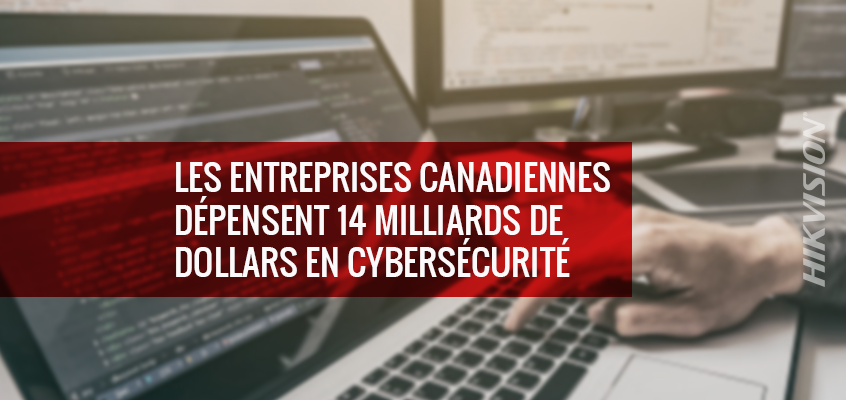Les entreprises canadiennes font face à des cyberattaques et dépensent 14 milliards de dollars en cybersécurité
Hikvision adopte une approche proactive en matière de cybersécurité
Selon une nouvelle enquête de Statistique Canada, une entreprise canadienne sur cinq a été victime d'une cyberattaque l'année dernière et a consacré 14 milliards de dollars à la cybersécurité, selon un article du magazine Canadian Security.
« Les entreprises canadiennes continuent d'adopter rapidement Internet et les technologies numériques, ce qui les expose à de plus grands risques et menaces en matière de cybersécurité. Cependant, l'impact de ces risques et menaces sur les investissements et les décisions quotidiennes des entreprises n'est pas facile à comprendre, car les incidents de cybersécurité ne sont souvent pas signalés », a déclaré Statistique Canada dans l'article.
L'article mentionnait les atteintes récentes à la sécurité des données, notamment Facebook, Air Canada, la Banque de Montréal et l'atteinte à la sécurité d'Equifax en 2017, comme une indication de la prolifération des cyberattaques. L'étude a révélé que les grandes entreprises de 250 employés ou plus couraient un plus grand risque de devenir une cible de cyberattaques. De plus, les cyberattaques de 2017 ont entraîné en moyenne 23 heures d'indisponibilité par entreprise.
Le sondage a également révélé que les entreprises canadiennes avaient dépensé ce qui suit en 2017 :
- 8 milliards de dollars pour le personnel et les sous-traitants en cybersécurité
- 4 milliards de dollars en logiciels et matériel connexes
- 2 milliards de dollars sur d’autres mesures de prévention et de rétablissement
Les données ont été recueillies auprès de 12 597 entreprises canadiennes entre janvier 2018 et avril 2018, avec un taux de réponse de 86%, selon Sécurité canadienne. Cliquez ici pour lire l'article en entier.
Hikvision North America a adopté une approche proactive en matière de cybersécurité avec de nombreuses initiatives, notamment le lancement de sa ligne directe dédiée à la cybersécurité et le Centre de Transparence du Code Source en 2018. Hikvision a également organisé un salon sur la cybersécurité au Canada en 2017, suivi d'un parcours aux États-Unis Hikvision a également mis en place un centre de cybersécurité en ligne avec les mises à jour du micrologiciel et publié une série de blogs présentant les meilleures pratiques et connaissances en matière de cybersécurité. Visitez-nous ici pour plus d’informations.

